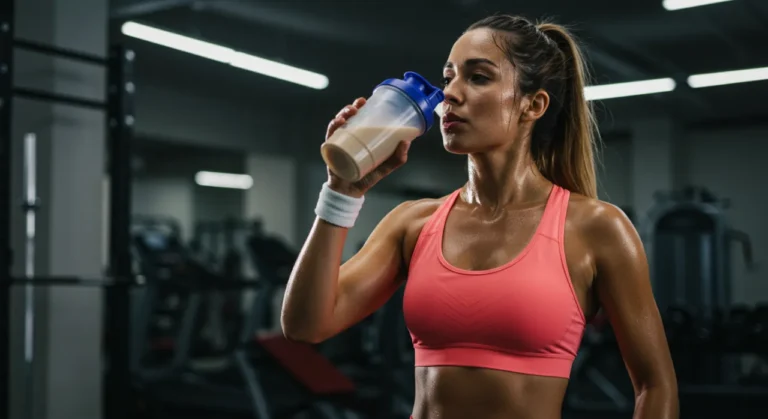Best HRV Tracking Devices 2025: Your Complete Guide to Heart Rate Variability Monitoring

Three months ago, I was that person who’d wake up feeling exhausted after eight hours of sleep, wondering why my body felt like it was running on empty. Sound familiar?
Federico kept mentioning this thing called HRV tracking—heart rate variability—but honestly, it sounded like another biohacking buzzword. Until I tried it myself.
The first morning my HRV showed a dramatic dip, I almost ignored it. But something made me take it easy that day instead of pushing through my usual workout. By evening, I felt that familiar scratch in my throat—my body had been fighting off something I couldn’t even detect yet.
That’s when it clicked. HRV tracking devices aren’t just fancy gadgets; they’re like having a conversation with your nervous system.
Why HRV Monitoring Actually Matters (And It’s Not Just for Athletes)
Here’s what nobody tells you about heart rate variability: it’s basically your body’s stress report card, updated in real-time.
Think of your heart like a jazz musician, not a metronome. A healthy heart doesn’t beat in perfect rhythm—it improvises slightly between beats based on what your body needs. That improvisation? That’s HRV. Higher variability typically means your nervous system is balanced and resilient. Lower variability suggests your body is under stress, fighting inflammation, or needs recovery.
The cool part is how HRV catches things before you feel them. Your autonomic nervous system—the part that runs everything automatically—shifts into different modes based on stress, sleep quality, hydration, even emotional state. An HRV tracker picks up these shifts hours or even days before they show up as fatigue, mood changes, or getting sick.
I’ve watched busy parents use HRV data to time their hardest workouts for days when their bodies could actually handle them. Night shift workers rely on it to optimize their unusual sleep schedules. Even people dealing with chronic stress find patterns they never noticed before.
The myth that HRV tracking is only for elite athletes? Complete nonsense. If you have a nervous system (spoiler: you do), you can benefit from understanding how it’s functioning.
The Best HRV Tracking Devices We’ve Actually Tested
After months of testing different HRV monitoring devices, here are the ones that consistently deliver accurate, actionable data:
Polar H10 Chest Strap – The gold standard for HRV measurement accuracy. This chest strap uses medical-grade ECG sensors that capture the precise electrical signals from your heart. The data quality is honestly impressive—it’s what many research studies use as their benchmark.
The 400-hour battery life means you can track continuously for weeks without worrying about charging. Works seamlessly with both Bluetooth and ANT+ devices, so it plays nice with pretty much any fitness app or device you’re already using.
The learning curve is minimal, but getting the strap positioning right takes a few tries. Once you nail it, the consistency is unmatched.
Garmin HRM-Pro Plus – If you want HRV tracking plus comprehensive fitness metrics, this is your device. Beyond heart rate variability, it captures running dynamics, swimming metrics, and stores data even when you’re away from your phone.
Giulia has been using the HRM-Pro Plus for her morning runs, and the dual connectivity (ANT+ and Bluetooth) means she can sync with her Garmin watch and smartphone apps simultaneously. The HRV data integrates beautifully with Garmin’s ecosystem if you’re already invested there.
One quirk: the sensor pod isn’t removable, so you’ll need to hand wash the entire strap. Small price for the data quality though.
WHOOP 4.0 – This is the Apple ecosystem of HRV tracking—everything just works together seamlessly. WHOOP doesn’t just measure HRV; it interprets it within the context of your sleep, daily strain, and recovery patterns.
The recovery score each morning feels like having a personal coach who actually knows your body. It’s caught overtraining patterns that would have taken me weeks to notice on my own. The continuous monitoring means you get a complete picture, not just snapshot readings.
The subscription model (around $30/month) isn’t for everyone, but the insights justify the cost if you’re serious about optimization. Plus, the community features connect you with people pursuing similar wellness goals.
Coros Heart Rate Monitor – The budget-friendly option that doesn’t compromise on core functionality. Reliable HRV readings, excellent battery life, and compatibility with most major fitness platforms.
Federico used this during a two-month traveling period when he needed something simple and dependable. The data consistency impressed him enough that he still recommends it for people getting started with HRV tracking.
No onboard memory means you need your phone nearby during sessions, but for the price point, it’s an excellent entry into serious HRV monitoring.
HeartMath Inner Balance – Different approach entirely. Instead of just tracking HRV, this device teaches you to actively improve it through guided breathing and coherence training.
The real-time biofeedback helps you understand how breathing patterns, thoughts, and emotions immediately affect your heart rate variability. It’s like meditation with a scientific feedback loop.
How to Choose Your Perfect HRV Tracker
The accuracy question comes first. Chest straps deliver the most precise HRV measurements because they detect actual electrical signals from your heart. Wrist-based devices are convenient but rely on optical sensors that can be affected by movement, skin tone, and fit.
Ask yourself about convenience versus precision. Do you want the most accurate data possible? Go with a chest strap. Prefer something you can wear 24/7 without thinking about it? Consider wrist-based options like WHOOP.
Think about your ecosystem. Already using Garmin devices? The HRM-Pro Plus integrates seamlessly. iPhone user who loves detailed health apps? Polar H10 works with practically everything. Want guided coaching built in? WHOOP’s approach might click with you.
Budget reality check time. One-time purchases (chest straps) versus ongoing subscriptions (WHOOP). Both approaches have merit, but know what you’re signing up for long-term.
What HRV Tracking Actually Teaches You
After six months of consistent HRV monitoring, here are the patterns that surprised me most:
Sleep quality affects next-day HRV more than sleep duration. Seven hours of deep, restorative sleep beats nine hours of fragmented rest every time.
Alcohol impact shows up in HRV data 12-24 hours after drinking, even when you feel fine. It’s like having a hangover detector that works before the hangover hits.
Stress from work arguments affects HRV differently than stress from physical exercise. Your nervous system distinguishes between productive stress and destructive stress—the data reveals which is which.
Hydration, meal timing, even room temperature during sleep create measurable changes in heart rate variability. Small adjustments compound into noticeable improvements over time.
Real User Experiences Worth Sharing
“Three months with the Polar H10 completely changed how I plan my training weeks,” shares one community member. “Instead of following rigid schedules, I adapt based on what my HRV tells me my body can handle.”
Another user mentioned: “WHOOP caught a developing illness two days before I felt any symptoms. The recovery score dropped dramatically, and I adjusted my schedule accordingly. Ended up with just mild sniffles instead of being completely knocked out.”
A parent in our community uses HRV tracking to optimize the timing of challenging conversations with teenagers: “High HRV days mean I can handle the emotional stress better. Low HRV days, we stick to lighter topics.”
Your Next Step Into Data-Driven Wellness
HRV tracking devices offer something uniquely valuable in the wellness space—objective feedback about subjective experiences. Instead of guessing whether you’re stressed, recovered, or ready for challenge, you get clear data to guide decisions.
The best HRV tracker for you depends on your accuracy needs, lifestyle preferences, and integration requirements. But here’s what I know for certain: once you start seeing the patterns between your daily choices and your nervous system’s responses, you can’t unsee them.
Ready to explore which device fits your wellness journey? The options above represent the most reliable, accurate HRV monitoring devices available today. And if you’re curious about how HRV tracking integrates with other biohacking tools, check out our complete guide to sleep tracking devices—because great data is only as good as the insights you extract from it.
Your nervous system is already tracking everything. Maybe it’s time you started listening.
Disclaimer: The information provided is for educational purposes only, not a substitute for professional medical advice. Always consult a healthcare professional.







